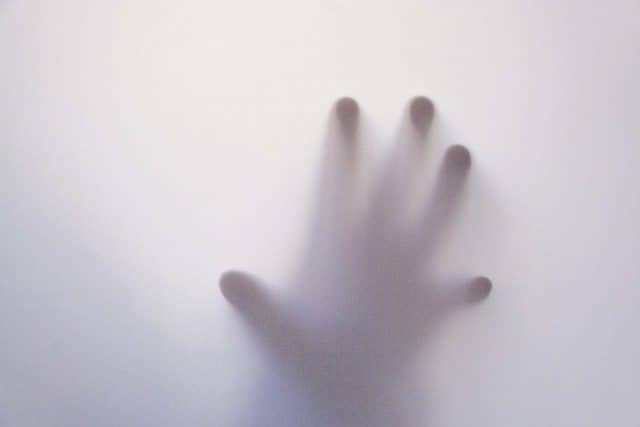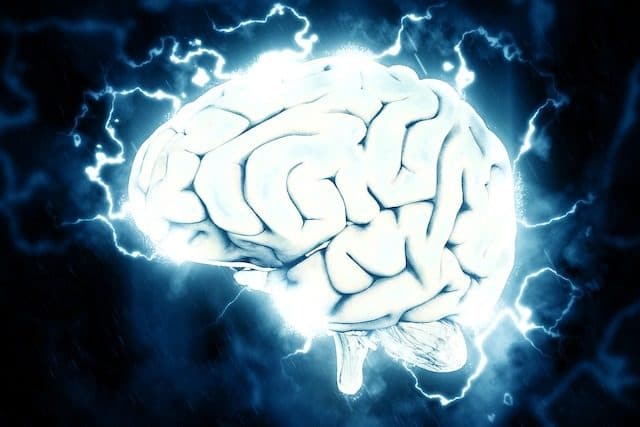Somewhere between one in 20 and one in 10 people claim to have had an out-of-body experience in their lifetime. If you’ve never experienced one, it can be hard to wrap your head around exactly what it is. You may have an inclination to think that someone who has experienced one was imagining things.
To be fair, of course, they were. That is an out-of-body experience, imagining yourself out of your body. Some people do think it’s literal, however, that their consciousness or soul actually leaves their body and they can look down at themselves and travel through some sort of spirit realm.
So whether it’s all in your head, or your consciousness actually leaves your body, something is definitely going on when people experience these. Let’s take a look a little bit deeper and find out what it means to have an out-of-body experience.
What Happens During an Out-of-Body Experience?

In the simplest terms, an out-of-body experience is exactly what it sounds like. The sensation that you, your mind, your soul, however you want to qualify what “you” means, has left your body. You are still conscious and aware, but there is a disconnect between your physical being and that mental understanding.
There is no definitive out-of-body experience. Given how unusual these are, and our inability to really record or understand such a thing scientifically save for monitoring brain activity, we just have to go by the descriptions given by people who claim to have experienced them and what it was like.
Many people describe seeing their body from a different perspective as though they were outside of themselves, floating perhaps. In one study of people who have claimed to have the experience in the past, most of those who reported having a spontaneous out-of-body experience didn’t actually feel that floating sensation.
Instead, they felt themselves elsewhere in the room, looking at themselves. But for others, those who experience induced out-of-body experiences, one of the key facets that they report is the fact that they do feel like they are above themselves, weightless and high above where they actually are.
Although there are different ways a spontaneous out-of-body experience or an induced out-of-body experience can come about, the basic difference is that you didn’t plan on a spontaneous one but an induced one is one that was brought on intentionally. For instance, spontaneous would be a near-death experience while induced might be something that was done in a lab for the purposes of study, or through some kind of guided meditation.
Are They Even Real?

This question is harder to answer than you might think. To start, there is not a lot of study on the phenomenon in the first place. And, even the study that has been devoted to it is limited because this is not something science can monitor and measure. How could you? It’s like doing a study of what people see in their dreams.
That said, there is some very limited data regarding what people have experienced during resuscitation from cardiac arrest when they should not be conscious and at least one person reported what they experienced in a way that could be independently and accurately confirmed.
Others who have claimed to see themselves from above have been unable to accurately identify any items that were in the room with them at the time. So there can definitely be some kind of consciousness during a near-death experience. But that doesn’t necessarily mean any consciousness left the body.
An out-of-body experience may be a kind of depersonalization, a symptom of a dissociative disorder.
The question of whether what these people are experiencing is real or not is a bit harder to define insofar as, what you consider real. If 10% of the population experiences out-of-body events, then surely something is happening. They occur around the world in nearly every culture, so it’s not a phenomenon brought on by something specific to one group of people. This is part of the human experience across the board.
In terms of judging whether something is really happening or not, you can probably think of it the same way you would consider hallucinations. In general, we would all agree that hallucinations are a thing that a person can be afflicted with. What they hallucinate may not be real, but that they are hallucinating is real. Likewise, someone having an out-of-body experience really has that sensation, even if we can’t definitively say any part of their consciousness literally left their body.
A 10-year-old boy once experienced an out-of-body event while he was being monitored in the hospital for his epilepsy. An EEG and an MRI were both performed. Activity was noted in the right temporal lobe as well as the temporoparietal junction which will get into shortly. This was one of the best examples scientists have ever had in terms of real evidence about an out-of-body experience and what happens inside a person’s mind when they experience it.
What Causes An out-of-body Experience?

As you might expect, medication or drugs in general, can be a major cause for an out-of-body experience, but not the only cause. There are medical conditions that can lead to an out-of-body experience as well, in particular epilepsy and even migraines. Arguably, the most famous cause of an out-of-body experience is a near-death experience.
Out-of-body experiences seem to be caused by stimulation of certain regions of the brain, such as the anterior precuneus. This part of your brain normally deals with things like spatial awareness, balance, and how sensory information related to your body is perceived. If you’re in an unstable state of consciousness, like waking from sleep or anesthesia, your understanding of your body and those sensations can be compromised.
Other research has suggested a link to damage in the temporoparietal junction in your brain which may contribute to out-of-body experiences in some people. This part of the brain has two hemispheres and is involved with several cognitive functions, including self-consciousness. It’s also responsible for constructing what they call body schema. You can think of this as your brain’s way of updating where you are and what you’re doing 24/7 in real time.
Under normal circumstances, this is essential just to navigate the world. You need to have an understanding of where every part of your body is in relation to the world around it, or how could you hope to even walk from here to the bathroom?
Also of importance is that this part of your brain is essential in creating your own self-image. Not just how we look physically, although that is a big part of it. The way you think you look is governed by this section of your brain, and also how you understand yourself based on your own memories and feelings is related to this portion of your brain as well.
While your entire brain makes up who you are, this particular spot, located between the parietal and temporal lobe, is very keenly linked to understanding who you are for yourself. That’s why it’s so essential to an out-of-body experience.
Similar research has concluded that these experiences are “related to a failure of integration of proprioceptive, tactile, and visual information of one’s body.”
Is There Any Purpose to an Out-of-Body Experience?

Since out-of-body experiences happen in 10% of the healthy population, it does beg the question of whether or not there’s a purpose behind it or even an upside beyond the novelty. In terms of the anterior precuneus Part of the brain, this could actually have some wide-reaching and very helpful effects for everyone else.
In studying how this part of the brain relates to out-of-body experience, we have learned that stimulation of the anterior precuneus can produce an effect similar to ketamine on the body. There is some hope that, in the future, this could be used as a new type of anesthetic for people undergoing surgery or other procedures.
If direct electrical stimulation on this part of the brain can mimic the effects of chemical anesthesia, then many of the side effects we currently associate with anesthesia could be limited or eliminated altogether. That could potentially save lives in the long run.
How Altering Your Perception Affects Your Consciousness

In one study of patients with epilepsy, electrodes in the brain were applied to the anterior precuneus. When stimulated, all the patients reported feeling some of the dissociative elements associated with out-of-body experiences, further confirming that this region of the brain is directly related.
Researchers also discovered this sense of self is easy to manipulate, much easier than they expected. Stimulation could cause a sense of dissociation in literal seconds, if not faster.
There are other interesting ways to create the same effect and alter your perception of self. One very bizarre experiment involves filming yourself from behind. If you were to sit in a chair with two cameras pointed at your back and have the feed from those cameras go into goggles on your face, you could recreate everybody’s experience. The left camera should feed into your left eye, the right camera feeds into your right eye.
Have someone rub your chest and, below the camera’s field of vision, engage in an identical stimulation. You will soon feel as though your mind, your conscious self, is located behind you, watching you from where the cameras are rather than in your own body.
An easier experiment to pull off, but less out-of-body, just requires two mirrors. Place them facing each other and then lean in between with just two-thirds of your face in view. Scratch your own cheek and look at your reflection. Not your first reflection, of the reflection of your back, but the third layer of your own face again. This may not work for everyone, and it works best in a dimly lit room, but there’s a good chance that you will soon be unable to recognize this reflection as your own.
Both of these experiments play with your brain’s ability to perceive the self. It’s not a fully out-of-body experience, but it plays with some of the same ideas and, as a bonus, you can be fully conscious when you try them out.
These illusions, particularly the ones with the camera, have shown that our brain’s ability to understand our sense of self and our consciousness is very much based on how it processes external data and sensations. You can trick your brain into thinking you are somewhere else if you present it with convincing enough illusions.
Other experiments involving virtual reality and even mannequins have proven that you can trick a person into thinking they are somewhere else in a room and they actually are. These are known as induced out-of-body experiences, and people can also induce via hypnosis, meditation, visualization, and sometimes drug use.
At the end of the day, we still know very little about out-of-body experiences. The science that we do have leads us to believe that what you’re experiencing is something closer to a hallucination than an actual spiritual event, even though some people who have experienced it are very convinced what they experienced was real. That said, whether you are leaving your body in a non-corporeal way or not, your brain is producing these sensations and your perception of reality has been significantly altered, and you have to admit that is kind of cool.